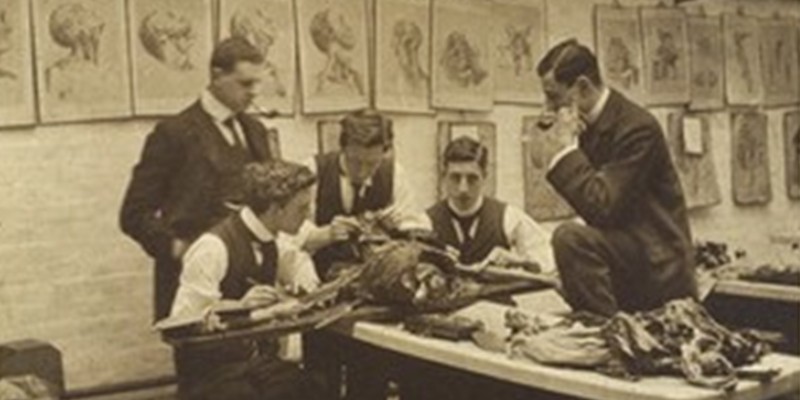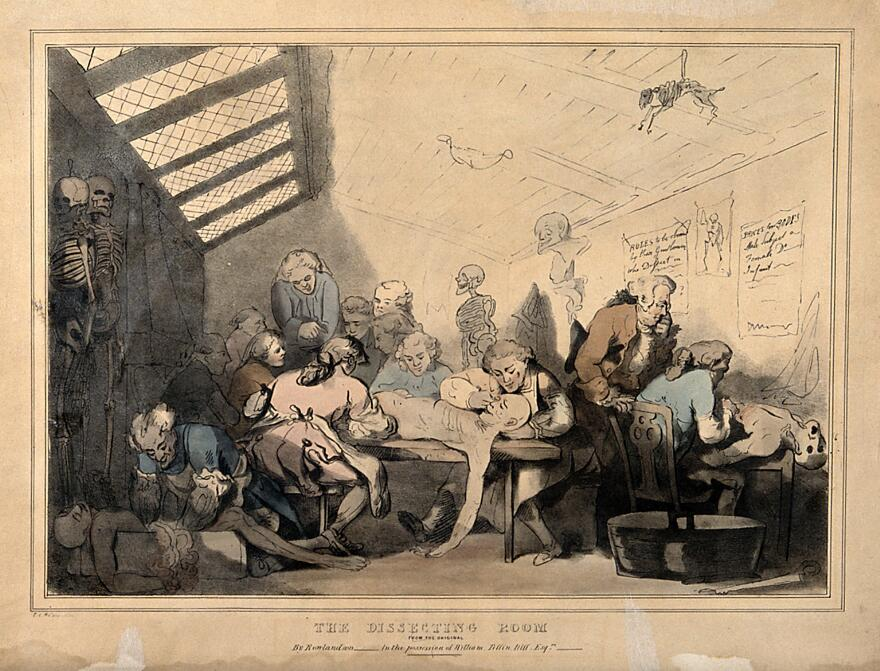How have the ethics of using human bodies in medical research changed over time, and what does this mean for the future?

Dissecting History is a new online exhibition which explores how the ethical changes to medical research on humans have impacted that research, and how those changes might affect future research.
Curated by MA students from the School of Fine Art, History of Art and Cultural Studies, Dissecting History: Exploring the Use of Human Bodies in Medicine Through Time, displays medical teaching tools, microscope images and more to demonstrate the changes in ethics through time.
The exhibition considers how the human bodies used in medical research were often sourced without consent, highlighting issues of ownership, bodily autonomy, and ethics.
As more and more accomplishments are achieved by medical researchers, including the successes of vaccines and cancer treatments, it is more important than ever to consider the darker history of research.
The exhibition moves from ancient considerations of ethics — with subjects such as body snatching for medical schools — and on to modern considerations, using stories such as that of Henrietta Lacks. It ends with a look at the future of human bodies in medical research, asking questions such as ‘will we continue to use them?’ and ‘what could we use instead’?

Three anatomical dissections taking place in an attic. Coloured lithograph by T. C. Wilson after a pen and wash drawing by T. Rowlandson. Wellcome Collection. Contributors: Rowlandson, Thomas, 1756-1827. Wilson, T.C. Wellcome Library no. 25405i.
Henrietta Lacks was an American woman whose cancerous cells were taken and experimented on without her consent, leading to many major research breakthroughs in cancer treatment and other areas. This was because her cells were the first immortal cell line to be found, meaning they did not die in laboratory conditions allowing them to be experimented on.
This raises serious issues around ethics and questions including whether we should continue to use her cells, and what restitution her family deserves. The exhibition considers the moral sacrifices of many through history, and whether those sacrifices are justifiable in the face of the millions of lives saved.
It was not until 2013 that Henrietta Lacks’ contribution to medical advancement was formally acknowledged and, while this was a good step, there are many more who continue to go unnamed and unrecognised.
Ying Liu, a student from the MA Curating Science course, reflected on her experience of working on the exhibition:
“We benefit from the achievements of medical research and appreciate the great contributions of scientists. However, we tend not to notice the serious consent issues involved, which means some human bodies were used in that research without the owner’s consent.
“Creating this online exhibition has provided me with the opportunity to know more and recognize these unsung heroes of medical research. We must acknowledge these serious ethical issues in medical research and think of what should be done in the future.”
MA Curating Science student Catherine Waites said:
“With growing public knowledge of medical research from the covid pandemic, it is important now to look back at all the unknown people we owe our medical advancements to and acknowledge their lack of consent in the research.
“I have found it deeply impactful to be able to research these people and to explore how ethics may change in the future of medical research. It was interesting to speculate about future research which does not yet exist.”
The items shown in this exhibition have been selected mainly from the Wellcome Collection, a free museum and library that contains a wide collection focused on health.
Feature image
The interior of a dissecting room: five students and/or teachers dissect a cadaver. Photograph, ca. 1900 (?). Wellcome Collection. Public Domain Mark.
